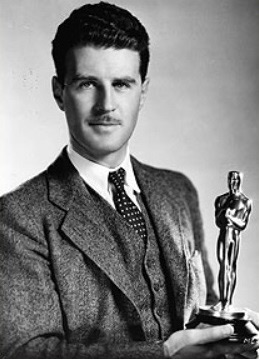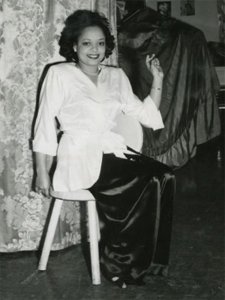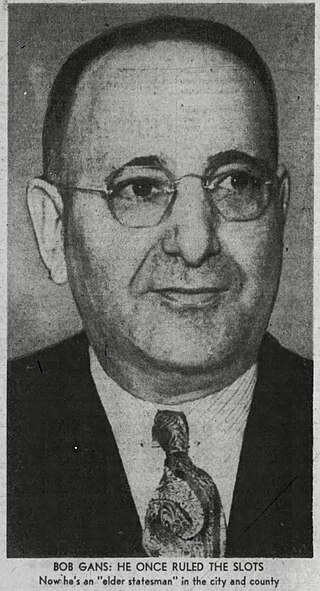Related Research Articles

Culver City is a city in Los Angeles County, California, United States. As of the 2020 census, the population was 40,779. It is mostly surrounded by Los Angeles, but also shares a border with the unincorporated area of Ladera Heights to the east. The city was named after its founder, Harry Culver, who first attempted to establish it in 1913.

Holy Cross Cemetery is a Catholic cemetery at 5835 West Slauson Avenue in Culver City, California, operated by the Los Angeles Archdiocese.

Douglas Graham Shearer was a Canadian American pioneering sound designer and recording director who played a key role in the advancement of sound technology for motion pictures. The elder brother of actress Norma Shearer, he won seven Academy Awards for his work. In 2008, he was inducted into Canada's Walk of Fame.

Ballona Creek is an 8.5-mile (13.7 km) channelized stream in southwestern Los Angeles County, California, United States, that was once a "year-round river lined with sycamores and willows". The urban watercourse begins in the Mid-City neighborhood of Los Angeles, flows through Culver City and Del Rey, and passes the Ballona Wetlands Ecological Preserve, the sailboat harbor Marina del Rey, and the small beachside community of Playa del Rey before draining into Santa Monica Bay. The Ballona Creek drainage basin carries water from the Santa Monica Mountains on the north, from the Baldwin Hills to the south, and as far as the Harbor Freeway (I-110) to the east.

Austin Cedric Gibbons was an American art director for the film industry. He also made a significant contribution to motion picture theater architecture from the 1930s to 1950s. Gibbons designed the Oscar statuette in 1928, but tasked the sculpting to George Stanley, a Los Angeles artist. He was nominated 39 times for the Academy Award for Best Production Design and won the Oscar 11 times, both of which are records.
The Miss Washington competition is the pageant that selects the representative for the state of Washington in the Miss America pageant.

Culver CityBus is a public transport agency operating in Culver City, California, currently serving Culver City, the unincorporated community of Marina del Rey, and the adjacent Los Angeles neighborhoods.
The Cotton Club was a night club in New York City in the 1920s and 1930s.
Paul Leroy "Ox Blood" Howard was an American jazz saxophonist and clarinetist.

St. Augustine Catholic Church is a Catholic church located in Culver City, California, part of the Roman Catholic Archdiocese of Los Angeles. The church is located across the street from the Sony Pictures Studios, previously the MGM Studios.

Charles Harris Garrigues was an American writer and journalist. He was a general-assignment reporter in Los Angeles, California, in the 1920s, a grand jury investigator and political activist in the 1930s, a newspaper copy editor in the 1940s and a jazz critic in the 1950s. His nickname was Brick, for his red hair.

Alpha Iota (ΑΙ) is a national collegiate professional sorority for women in the field of business. It was established in 1925 at the American Institute of Business in Des Moines, Iowa.

Mildred Boyd (1908–1999) was an actress, a singer, and a dancer who was active in Hollywood from the 1920s through the 1950s. Like many Black actresses of her era, she was often cast as a maid or a nurse.

Culver Boulevard is an east-west thoroughfare in the Westside region of Los Angeles County, California, connecting Venice Boulevard to the coast roads.

Nude swimming in US indoor pools was common for men and boys from the late 1880s until the early 1970s, but rare for women and girls. For much of that time period, indoor pool use was primarily for physical education or athletic competition, not recreation. There are regional differences, public indoor pools were more frequently built in Midwest and Northeast states.

Robert Joseph "Bob" Gans was the "slot-machine king" of the Los Angeles underworld during the interwar period, and later a philanthropist and civic leader. For many years, he ran the board of Mt. Sinai Hospital, now Cedars-Sinai Medical Center. Gans was one of the most circumspect figures in the history of organized crime in southern California, but he was associated with both Charlie Crawford's City Hall Gang of the 1920s and Guy McAfee's Combination in the 1930s.

James Francis Utley also known as Jimmy "the Eel" Utley, James Baxter, and James Bradley, was an underworld figure of mid-20th-century southern California in the United States, known for running bingo games and an illegal-abortion ring.

The Toddle House was a night club that operated from approximately 1946 until 1953 in Culver City, California, United States. It featured live music, steak dinners, and what would now be called strippers. The club was allegedly used for prostitution and as a hangout for racketeers. Shortly after the club's liquor license was suspended by the state and operating permit was revoked by the city, the building was gutted by two fires that broke out in different locations within the structure on the same morning.
Sam Lazes was an alleged bookmaker who worked in southern California, United States. He was a suspect in the murder of "the two Tonys" in 1951. In 1974 he was arrested by an organized-crime task force investigating bookmaking at Del Mar Racetrack.

Julia Kippen Jaffray was a Canadian-born American social worker and clubwoman who was a national leader in prison reform and consumer rights.
References
- ↑ Kirk, Ian (July 22, 2017). "Sebastian's Cotton Club Culver City, California (1926-1938) •" . Retrieved 2024-06-07.
- ↑ Cerra, Julie Lugo (January 3, 2012). "Sebastian's Cotton Club | Culver City News". www.culvercitynews.org. Retrieved 2024-06-07.
- ↑ "40 Years of Corruption in Culver City's Regime Told". Daily News. August 8, 1953. p. 3. Retrieved 2024-06-07.